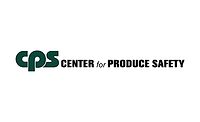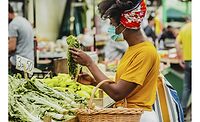Exclusive interview: Défoncé on cannabis chocolate and food safety








Food Safety Strategies recently got the chance to speak with Eric Eslao, CEO and founder of Défoncé, as well as Julie Brooks, director of manufacturing, about their cannabis chocolate, and food safety.
Liz Parker: Can you speak about your Clean Infusion process and what it entails?
Eric Eslao: It is a proprietary process we use to infuse the specific cannabinoids going into our edible products. We take the cannabis extract, refine it and then add it into a fat-soluble slurry. That base is then added to our melters to mix with the chocolate. That stirs for about eight hours, sometimes longer, and then we begin making the actual chocolate bars.
Clean Infusion ensures homogenous, safe, and consistent dosing across all of our chocolate bars. The amount of time the cannabis extract and chocolate mix, and at what temperature, makes all the difference in product quality in potency.
We don’t do extraction in-house; we source material, specifically distillate, from extractors in Northern California.
LP: Have you been able to improve your QA and QC?
EE: Absolutely. When you have strong operating procedures, you get strong input. We’ve also assembled a team with food manufacturing backgrounds, so they know what to look for from a QA and QC perspective.
Julie Brooks: We have control measures to ensure that we meet those quality standards. We couple that with a monitoring process, corrective actions, and record keeping so that we have a history of any potential issues that have popped up. Eric has a pretty high standard on the quality side, down to the blemishes.
EE: Most chocolatiers would just let that go through, but we won’t. It doesn’t ruin the quality of the bar, but I feel like it does ruin the experience for the customer.
LP: Do you do anything different compared to the other cannabis chocolate manufacturers?
EE: I think everything we do is different from every edible manufacturer. It’s really core execution across the board. The way that we approach this is not cannabis first, but food first. When you do that, you look at how you manufacture the product quite differently. You think about taste, you think about customer experience, you think about appearance, and those are things still lacking in the edible space today.
LP: Why are these types of details important to today’s cannabis consumer?
EE: We take an elevated approach to edibles manufacturing in that I think consumers deserve better. They should have higher expectations for edibles. We see ourselves as a product that is going to eventually be sold at Whole Foods or any high-end grocery store.
JB: I think it’s a lot like being the older sibling in the family where you have to set the bar. As a company, we would like to see everyone hold themselves to a higher standard because the world is watching to see how legalized recreational use is going to go. And I think that for us, we’re setting the standards for the cannabis industry, and that’s where we’re ahead of most other manufacturers.
LP: Can you talk about your product line? Do you have any top sellers?
EE: When we first started in 2014, it was all about high-dose edibles at the lowest price possible. But we stayed true to our original thesis: that low dose is the way to go and that recreational consumers would dominate the industry. Our chocolate-covered blueberries, espresso beans, hazelnuts and almonds are one milligram per piece. So folks can actually snack on them.
It wasn’t too long ago where you would consume a gummy and be knocked out for the next two days. So for us, we just want the consumption experience to feel very normalized, like our regular eating habits. We are trying to really help the industry, to normalize it, and one of the ways to do that is to find ways the people customarily consume food products, and create offerings that cater to that audience.
Looking for a reprint of this article?
From high-res PDFs to custom plaques, order your copy today!












